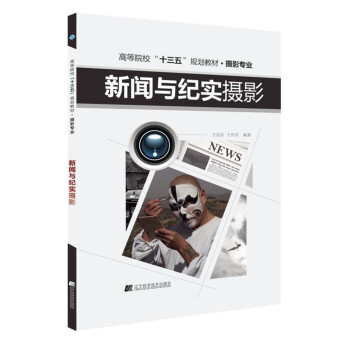
具體描述
內容簡介
本書是根據《大學英語教學大綱》(理工科本科用)的要求編寫的,所選材料涉及環境科學的不同領域,內容分為七個部分,每個部分含若乾單元。每個單元由一篇課文和閱讀材料組成,共計64篇。各單元練習配有主觀題和客觀題,學生在完成這些練習題的基礎上能夠全麵理解課文,拓展知識麵和提高整體的語言運用能力。本書旨在作為高等院校環境科學本科生和研究生的專業英語教材,也可供相關專業人員學習環境科學專業英語使用。作者簡介
遊霞,副教授,1986年於四川外語學院獲得文學學士學位,2000年於英國BRUNEL大學獲得環境管理碩士學位,1988—2001年分彆在重慶環境科學院和重慶市環境保護局從事環境保護國際閤作項目管理及翻譯工作,2002至今任教於重慶工商大學環境與資源學院,主要擔任環境科學與工程專業英語和環境管理(雙語)課程教學工作。目錄
ContentsPart 1 Introduction to Environmental Science and Engineering - 1 -
UNIT 1 What is Environmental Science? - 1 -
UNIT 2 What is Environmental Engineering? - 9 -
UNIT 3 Industrial Revolutions and Environmental Problems - 16 -
UNIT 4 Global Environmental Concerns - 24 -
Part 2 Air Pollution and Control - 33 -
UNIT 5 Energy and Energy Efficiency - 33 -
UNIT 6 Air Pollution, Sources and Characteristics - 41 -
UNIT 7 Health, Environmental and Climate Impact - 50 -
UNIT 8 Theory and Objectives of Air Dispersion Modeling - 58 -
UNIT 9 Approaches to Emission Estimation - 66 -
UNIT 10 Air Pollution Emission Control Devices for Stationary Sources - 72 -
UNIT 11 Biofiltration of Volatile Organic Compounds (VOCs)-An Overview - 80 -
Part 3 Water Pollution and Control - 87 -
UNIT 12 Types and Sources of Water Pollution - 87 -
UNIT 13 Chemistry of Wastewater - 97 -
UNIT 14 Toxicological Effects of Major Environmental Pollutants: An Overview - 104 -
UNIT 15 Conventional Wastewater Treatment Process - 113 -
UNIT 16 Biological Wastewater Treatment - 122 -
UNIT 17 Advanced Wastewater Treatment - 135 -
UNIT 18 An Introduction to Water Chemistry in Freshwater Aquaculture - 144 -
UNIT 19 New and Emerging Water Pollutants Arising from Agriculture - 153 -
Part 4 Solid Waste and Disposal - 162 -
UNIT 20 Sources, Types and Composition of Solid Wastes - 162 -
UNIT 21 Impact of Municipal and Industrial Non-Hazardous Waste Landfills on
Public Health and the Environment: An Overview - 172 -
UNIT 22 Hazardous Waste Management - 180 -
UNIT 23 Waste to Energy - 190 -
UNIT 24 Technical Discussion of Plasma Gasification① - 201 -
Part 5 Noise Pollution and Soil Pollution - 210 -
UNIT 25 Assessing and Mitigating Noise Impacts - 210 -
UNIT 26 Soil Pollution - 219 -
Part 6 Scientific Instruments for Environmental Science - 227 -
UNIT 27 Environmental Impact Assessment (EIA) - 227 -
UNIT 28 Framework for Ecological Risk Assessment - 237 -
UNIT 29 Electrochemical Sensors for Environmental Monitoring: A Review of Recent
Technology - 252 -
Part 7 Pollution Prevention - 262 -
UNIT 30 Pollution Prevention Concepts and Principles - 262 -
UNIT 31 Green Chemistry and Technology for Sustainable Development Basic
Principles and Applications - 273 -
UNIT 32 The Application of Biotechnology to Industrial Sustainability - 282 -
Reference - 293
精彩書摘
UNIT 1 What is Environmental Science? Environmental science is a multidisciplinary academic field that integrates physical, biological and information sciences (including but not limited to ecology, biology, physics, chemistry, zoology, mineralogy, oceanology, limnology, soil science, geology, atmospheric science, geography and geodesy) to the study of the environment, and the solution of environmental problems. Environmental science emerged from the fields of natural history and medicine during the Enlightenment①. Today it provides an integrated, quantitative, and interdisciplinary approach to the study of environmental systems. Related areas of study include environmental studies and environmental engineering. Environmental studies incorporate more of the social sciences for understanding human relationships, perceptions and policies towards the environment. Environmental engineering focuses on design and technology for improving environmental quality in every aspect. Environmental scientists work on subjects like the understanding of earth processes, evaluating alternative energy systems, pollution control and mitigation, natural resource management, and the effects of global climate change. Environmental issues almost always include an interaction of physical, chemical, and biological processes. Environmental scientists bring a systems approach to the analysis of environmental problems. Key elements of an effective environmental scientist include the ability to relate space, and time relationships as well as quantitative analysis. Environmental science came alive as a substantive, active field of scientific investigation in the 1960s and 1970s driven by (a) the need for a multi-disciplinary approach to analyze complex environmental problems, (b) the arrival of substantive environmental laws requiring specific environmental protocols of investigation and (c) the growing public awareness of a need for action in addressing environmental problems. Event that spurred this development included the publication of Rachel Carson’s landmark environmental book Silent Spring② and helped increase the visibility of environmental issues and create this new field of study. ……前言/序言
序 言
環境專業英語是在大學英語之後,環境專業本科生和研究生所需要掌握的應用型英語,其目的是讓學生更多地瞭解國際環境科學領域的最新研究成果和發展動態,閱讀、撰寫和發錶英文學術論文,參與國際學術交流與閤作。
作者從事環境科學翻譯20餘年,對環境專業英語的價值有比較深刻的認識,在執教環境專業英語的過程中一直在思考:環境專業英語教材應當包含哪些內容?教師該怎麼教?學生該怎麼學?通過這些年的思考和學生對現有教材的評價及其對未來教材的期望,作者産生瞭自己編寫環境專業英語教材的構想。
作者認為,環境專業英語課程的教學目的主要是兩個方麵,一是培養和提高學生對英語科技文獻快速而係統的閱讀能力,二是培養和提高學生對科技文獻資料的英漢互譯能力(而通常強調的是英語寫作能力)。要達成上述目的,必然涉及大量的專業詞匯和英語科技文獻的語法、句法特點的運用,而專業詞匯的積纍,語法、句法特點的把握,隻有通過大量的閱讀和英漢互譯,方能收到事半功倍之效。因此,隻有學生強化瞭閱讀能力和英漢互譯能力,其聽說讀寫譯能力會得到全麵的提升。
根據高等學校理工科《英語教學大綱》的要求和作者確定的教學目的,作者在閱讀材料的選擇中全麵考慮瞭所涉及的單詞和主題,並在練習中增加瞭能夠真正檢驗學生閱讀能力的練習題。本書共分7個部分,每個部分分若乾單元,共32個單元,每個單元由一篇課文和一篇或多篇閱讀材料組成。課文的內容是環境科學的一些基礎原理,閱讀材料是相應主題的延伸和新技術介紹。根據課文內容,配有相應練習題、注釋和詞匯錶。課文和閱讀材料均選自英文原版教材、科技報告、學術著作、專業期刊、國際會議論文集等,涵蓋瞭環境科學與工程專業的相關領域。具體內容如下:
Part 1 介紹環境科學與工程的內涵及産生背景、全球環境問題等。
Part 2 介紹空氣汙染與控製,包括能源利用及能源效率(空氣汙染産生的主要原因)、空氣汙染類型及來源、空氣汙染影響、空氣汙染模擬及汙染物排放估算方法、傳統的和創新的空氣汙染治理技術等。
Part 3 介紹水汙染及控製,包括水汙染來源及種類、汙水化學、汙水中主要汙染物的毒性影響、各種汙水處理工藝、農業活動中産生的新興的汙染物等。
Part 4 介紹固體廢棄物及處理方法,包括固體廢物的來源及分類、垃圾填埋場對環境和健康的影響、危險廢物管理、固體廢物的迴收及利用等。
Part 5 介紹噪聲汙染、土壤汙染及控製技術。
Part 6 介紹環境工程中常用的技術手段,包括環境影響評價、生態風險評價及環境監測技術等。
Part 7 介紹汙染預防,包括汙染預防的基本概念和原則、綠色化學和可持續發展的基本原理以及生物技術的運用等。
本書的編寫得到瞭重慶工商大學教材項目建設的資助,同時也得到瞭重慶工商大學環境與資源學院領導的大力支持。在編寫的過程中,作者參閱瞭不少有益的資料和書籍,吸取瞭同行專傢的寶貴經驗。同時也得到瞭部分學生的問捲調查支持。謹在此一並錶示感謝。
由於環境科學的多學科性,加之作者的水平有限,本書在材料選擇上和文字處理上難免有疏漏和不妥之處,懇請讀者不吝指教,使本書在使用過程中不斷得到完善。
遊 霞
2015年10於重慶工商大學
用戶評價
相關圖書
本站所有內容均為互聯網搜尋引擎提供的公開搜索信息,本站不存儲任何數據與內容,任何內容與數據均與本站無關,如有需要請聯繫相關搜索引擎包括但不限於百度,google,bing,sogou 等
© 2025 book.qciss.net All Rights Reserved. 圖書大百科 版權所有











![現代大學英語(精讀6 第2版 附光盤) [Contemporary College English] pdf epub mobi 电子书 下载](https://pic.qciss.net/12119956/58d1419eN005d8601.jpg)









